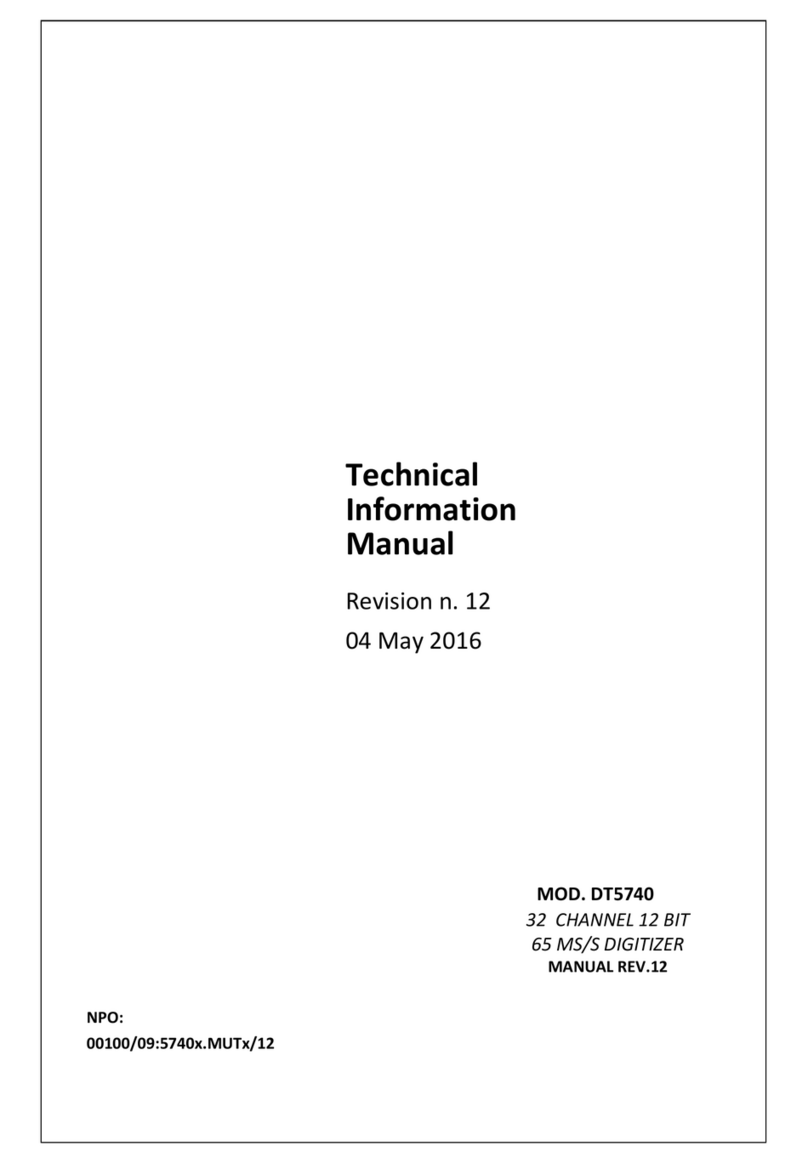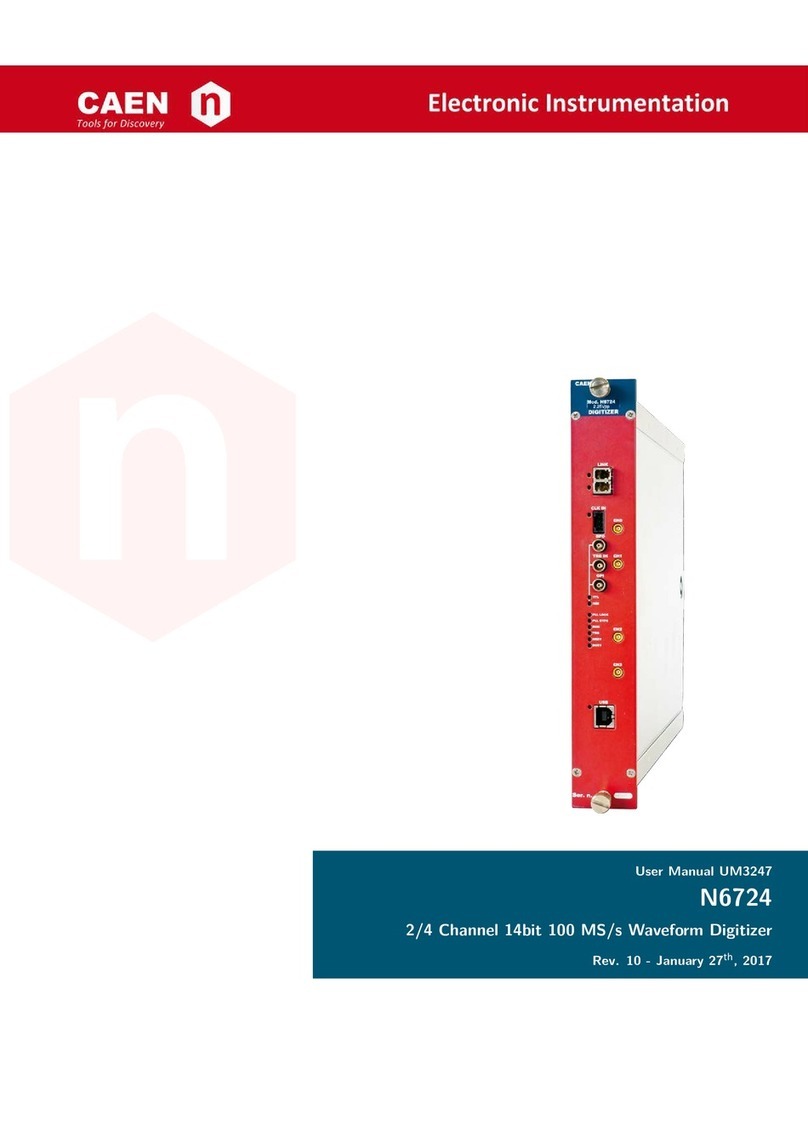
Document type: Title: Revision date: Revision:
User's Manual (MUT) Mod. N957 8k Multi-Channel Analyzer 28/05/2012 6
NPO: Filename: Number of pages: Page:
00105/04:N957x.MUTx/06 N957_REV6 35 4
3.11CALIBRATION SET REGISTER (0X09, W)..................................................................................................23
3.12CALIBRATION CLEAR REGISTER (0X0A, W)............................................................................................23
3.13SCRATCH REGISTER (0X0B, R/W)............................................................................................................23
3.14BUFFER OCCUPANCY REGISTER (0X0C, R/W).........................................................................................23
3.15SCALER LOW REGISTER (0X0D, R) .........................................................................................................23
3.16SCALER HIGH REGISTER (0X0E, R).........................................................................................................23
3.17TIMER LOW REGISTER (0X0F, R/W)........................................................................................................24
3.18TIMER HIGH REGISTER (0X10, R)............................................................................................................24
3.19LIVETIME LOW REGISTER (0X11, R) .......................................................................................................24
3.20LIVETIME HIGH REGISTER (0X12, R).......................................................................................................24
3.21SOFTWARE CLEAR REGISTER (0X13, W) .................................................................................................24
3.22SOFTWARE RESET REGISTER (0X14, W)..................................................................................................24
4.SOFTWARE TOOLS .................................................................................................................................25
4.1SOFTWARE INSTALLATION:GETTING STARTED ......................................................................................25
4.1.1Software installation: Windows.....................................................................................................25
4.1.1.1Software installation: Demo folder ...........................................................................................................26
4.1.1.2Software installation: Doc folder ..............................................................................................................26
4.1.1.3Software installation: LabView folder ......................................................................................................26
4.1.1.4Software installation: Lib Folder...............................................................................................................26
4.1.1.5Software installation: Upgrade folder .......................................................................................................26
4.1.2Driver installation.........................................................................................................................27
5.LIBRARY AND DEMO SOFTWARE OVERVIEW..............................................................................29
5.1N957TOOL LIBRARY ..............................................................................................................................29
5.1.1N957Tool library: Overview .........................................................................................................29
5.1.2N957Tool library: typical usage ...................................................................................................30
5.2DEMO SOFTWARE ...................................................................................................................................30
5.2.1Demo software: N957Demo..........................................................................................................30
5.2.1.1N957Demo: overview ...............................................................................................................................30
5.2.1.2N957Demo: settings..................................................................................................................................30
5.2.1.3N957Demo: configuration file format.......................................................................................................31
5.2.1.4N957Demo: output data format.................................................................................................................32
5.2.1.5N957Demo: practical example..................................................................................................................32































